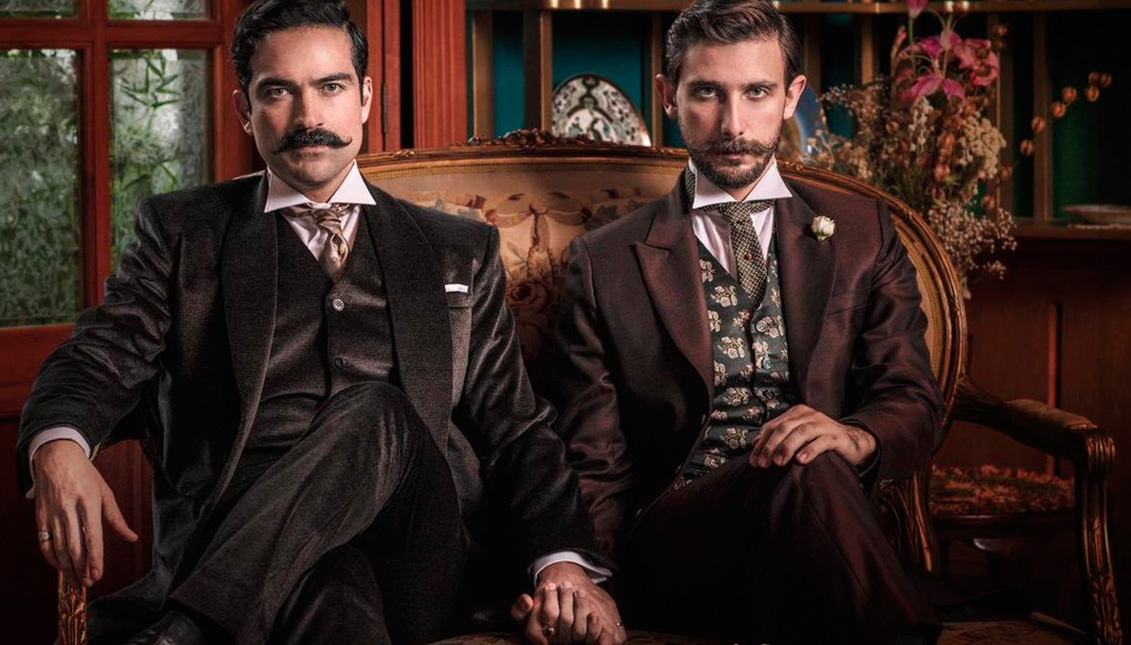
The Dance of the 41: The scandal that "invented" homosexuality in Mexico
Amid the struggle of the LGBTQ community in Mexico, the premiere of a same-sex love film set during Porfirio's reign is a triumph.
At the beginning of the last century, amid the Porfirio Díaz dictatorship, the police raided a private party in downtown Mexico City and 41 men were arrested. Half of them were dressed as women. The case caused a great stir in the press at the time and its reverberations reached the National Palace, known as "The Dance of the 41" (el baile de los 41).
One of the men arrested — most of their names remain hidden — was congressman Ignacio de la Torre y Mier, son-in-law of Porfirio Díaz and candidate to govern Morelos. Although his father-in-law ordered his removal from the list, Diaz could not do anything against the weight of the press and the power of the story, which has been the power of many novels and also the central plot of a film that opens on Nov. 19, El baile de los 41.
Directed by David Pablos and starring Alfonso Herrera, Mabel Cadena and Emiliano Zurita, the three characters embody Ignacio de la Torre, his wife Amada Díaz and De la Torre's fictional lover, Evaristo Rivas.
"We wanted to tell a story that would not ridicule the LGBT+ community," actor Alfonso Herrera told EL PAÍS. "It was a great challenge because we also did not want to vindicate the image of Ignacio de la Torre, an ambitious character, politician and businessman who married Amada Díaz out of interest. It was important to show this character in a three-dimensional way".
The film has provoked great expectation and is premiering in theaters throughout the country, but has been classified by the Ministry of the Interior as a film not suitable for minors under 18 years of age because of its explicit sex scenes. The classification is something the film's director, Pablos, has been quite critical of, pointing out that even today, the male body and homosexual sex continues to be a taboo, and proof of the machismo present in Mexican society.
"In the cinema, it is preferable to see a man killing another man than to see one dressed as a woman. Having a delinquent son than one who is a faggot," said the filmmaker, who cannot help but see the parallels between the time the film was made and the present. "Prejudices, reticence, and low visibility of sexual diversity for the community continue."
Despite the fact that Mexico is in the midst of a struggle for equal LGBTQ rights, with very notable victories such as the recent approval of civil unions between people of the same sex in a conservative state such as Puebla, conversion therapies are still practiced and there are states such as Jalisco where same-sex marriages were only accepted by order of the Supreme Court. Organizations have also been quick to point out that the ruling has not been respected.
Not only femicides, but violence against LGBTQ+ people and hate killings are very much alive in Mexico. It is the country with the second-highest rate of transgender murders after Brazil, according to Transgender Europe. It's why posters of the film showing two men kissing or holding hands can only be seen as a victory, although fundamentalist groups point to it as a provocation.
"It is a great victory. They don't know how much we have struggled to find companies to support the project," recalled Pablos.
RELATED CONTENT
Beyond the jokes and lurid headlines that it captured in the press, the case highlighted a reality that until then, had been taboo in the country and served as a symbol of the struggles that the LGBTQ+ community would later carry out. Even writers like Carlos Monsiváis point out that the raid "invented homosexuality in Mexico."
The number 41 also took on a negative connotation and did not even exist in barracks at the time because it was seen as an insult to masculinity. Over time, it has become a sign of pride and not a stigma.
But what happened to the 41 men that were arrested at the party?
While many managed to hide their names, as mentioned above, those who didn't have the money or influence to "shut up" the authorities were condemned by public scandal to the atrocious ostracism of sweeping the streets of the capital dressed in women's clothes or punished to forced labor in Yucatán.
Ignacio de la Torre paid much less for his slip-up than his comrades. Although he ceased to be socially active, history remembers him as a prisoner of the Zapatista Army during the Mexican Revolution and there are even rumors that there may have been an alleged romance between him and Zapata.











LEAVE A COMMENT: